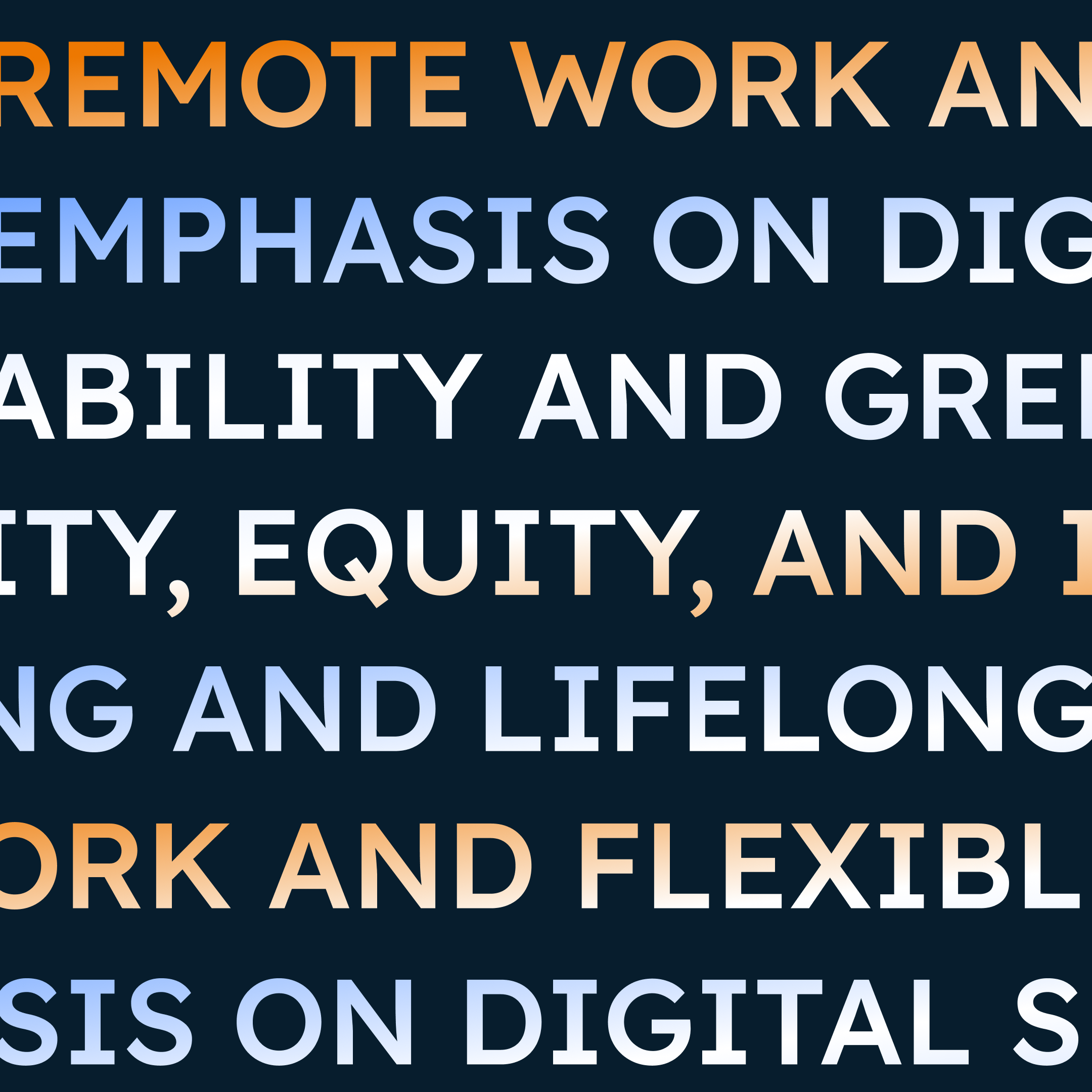Skip to content
June 2023

Workplace diversity has become an increasingly discussed issue in recent years. In the workplace, diversity – which is defined as the differences between individuals, such as gender, race, age, culture, and religion – is not only important, but also necessary.
It brings a multitude of perspectives and experiences to the table, which ultimately leads to a more successful and innovative company. In the telecom industry, where MMDSmart℠ operates, diversity plays a crucial role in keeping up with the constantly changing technological landscape, relating to a dynamic multi-colored global industry, and meeting the diverse needs of customers.
By incorporating different viewpoints and experiences, companies like MMDSmart℠ can identify opportunities that might not have been visible otherwise, leading to innovative solutions and competitive advantages. We have a better understanding of the needs and preferences of our diverse customer base, which allows the company to offer tailored and effective solutions. Additionally, a diverse workforce helps MMDSmart℠ stay agile in an ever-changing market, as we can more easily adapt to new trends, technologies, and customer demands.
Benefits of Diversity
One of the main benefits of diversity is widening the talent pool. By embracing diversity, we can attract a wider range of candidates with different backgrounds and experiences. This results in a more skilled and talented workforce, which in turn leads to improved performance and productivity.
Another benefit of diversity is the ability to share different experiences. When individuals with diverse backgrounds and perspectives come together, they are able to bring new ideas and solutions to the table. This creates an innovative and dynamic work environment, where everyone has a voice and is encouraged to contribute.
Moreover, diverse teams have been shown to outperform homogeneous teams in terms of problem-solving and decision-making. This is because diverse teams bring a wider range of perspectives and experiences to the table, which allows for a more thorough analysis of issues and more creative solutions.
Challenges of Diversity
Despite the many benefits of diversity, there are also challenges that companies must be aware of and work to overcome. One of the main challenges is unifying the different experiences with the company goals. It can be difficult to create a shared vision and sense of purpose when individuals come from such diverse backgrounds.
Another challenge is internal resistance. Some employees may resist diversity initiatives, feeling that it is a threat to their own position or the company culture. This can create tension and conflict within the organization.
Finally, communication can be a challenge in diverse teams. Individuals may have different communication styles or may speak different languages. This can lead to misunderstandings or miscommunications, which can ultimately impact productivity and team cohesion.
Best Practices to Overcome Diversity Challenges
At MMDSmart℠, we have implemented several best practices to overcome the challenges of diversity. One of the key strategies is team building. We have found that team-building activities, such as group outings and retreats, help to build trust and rapport among team members. This creates a more cohesive team, where individuals feel comfortable sharing their ideas and perspectives.
Another strategy we have implemented is soft skills improvement. Soft skills, such as communication and collaboration, are essential in diverse teams. We offer training and workshops to help our employees develop these skills, which helps to reduce communication challenges and improves team performance.
Finally, we believe that feedback is essential in diverse teams. We encourage our employees to provide feedback to each other on their work, communication, and collaboration. This helps to create a culture of continuous improvement, where individuals are able to learn from each other and grow both personally and professionally.
A Part of our Culture
Diversity is a crucial element in the telecom industry, and particularly at MMDSmart℠. By embracing diversity, we are able to attract a wider range of talent, bring new perspectives and ideas to the table, and ultimately improve performance and productivity. However, it is important to be aware of the challenges of diversity and work to overcome them through team building, soft skills improvement, and feedback. At MMDSmart℠, we believe that diversity is a strength, and we are committed to creating a diverse and inclusive work environment where everyone can thrive.

The labor market is a dynamic entity that constantly evolves and adapts to the ever-changing demands of industries. Staying informed about current trends and future forecasts is crucial for professionals seeking growth and success in their careers. We’ve put together some current trends in the labor market, highlighted the top forecasted opportunities for the coming years, and explored new opportunities emerging in the telecom industry.
Current Trends
The labor market is currently undergoing significant transformations. Some of the prominent trends include:
- Remote Work and Flexible Schedules: The COVID-19 pandemic accelerated the adoption of remote work and flexible schedules. Many companies have recognized the benefits of these arrangements, leading to a rise in remote job opportunities across various industries.
- Emphasis on Digital Skills: With the rapid advancement of technology, digital skills are highly sought after. Professionals with expertise in areas such as data analysis, AI, cybersecurity, and digital marketing have a competitive edge in the job market.
- Sustainability and Green Jobs: In response to growing concerns about climate change and environmental sustainability, there is an increasing demand for professionals with expertise in green jobs. Industries such as renewable energy, sustainable agriculture, and environmental consulting are experiencing significant growth.
- Diversity, Equity, and Inclusion: Companies are recognizing the value of diverse perspectives and are actively seeking professionals who can contribute to creating inclusive work environments.
- Upskilling and Lifelong Learning: The rapid pace of technological advancements requires professionals to continuously upskill and engage in lifelong learning. Employers are increasingly valuing candidates who demonstrate a commitment to ongoing development and adaptability.
Top Job Forecast
Forecasting specific job types over the next five years can be challenging due to the dynamic nature of the labor market. However, based on current trends and emerging industries, the following five types of jobs are expected to be in high demand:
- Data Scientists and Analysts: With the increasing amount of data generated by businesses and the need to derive valuable insights from it, data scientists and analysts will continue to be in high demand. These professionals will be responsible for collecting, analyzing, and interpreting large datasets to drive informed decision-making and strategic planning.
- Artificial Intelligence and Machine Learning Specialists: As AI and machine learning technologies continue to advance, the demand for professionals specializing in these fields will soar. AI specialists will be crucial in developing and implementing intelligent systems, while machine learning specialists will focus on training algorithms to recognize patterns and make predictions.
- Cybersecurity Experts: With the persistent threat of cyber attacks and the increasing value of data security, cybersecurity experts will remain in high demand. These professionals will play a vital role in safeguarding digital infrastructure, protecting sensitive information, and ensuring compliance with data protection regulations.
- IoT Specialists: The Internet of Things (IoT) continues to revolutionize industries, from healthcare to manufacturing. IoT specialists will be essential in developing and managing interconnected devices and systems. Their expertise in areas such as sensor networks, cloud computing, and data analytics will be in high demand.
- Healthcare Professionals: The healthcare industry will experience sustained growth due to factors such as aging populations, advancements in medical technology, and increased focus on preventive care. Various healthcare professions, including nurses, physician assistants, physical therapists, and medical researchers, will see high demand.
It’s important to note that the job market is influenced by a wide range of factors, including economic conditions, technological advancements, and industry-specific developments. Therefore, while these job types are expected to be in demand, it’s crucial for individuals to stay adaptable, continuously update their skills, and remain aware of emerging trends in their respective fields.
Top new opportunities in the Telecom Industry
The telecom industry is evolving at a rapid pace, presenting exciting new opportunities. There is no shortage of opportunities available in the industry.
With the increasing reliance on digital infrastructure, ensuring the security of networks and data is paramount. Professionals with skills in cybersecurity will find numerous opportunities to protect networks, prevent cyber threats, and ensure data privacy.
Additionally, as telecom companies expand their networks to accommodate growing demands, professionals involved in the development of telecommunications infrastructure will be in high demand. This includes roles such as site acquisition specialists, project managers, and network architects.
Finally, the integration of artificial intelligence (AI) and machine learning (ML) in the telecom industry opens up avenues for professionals specializing in these fields. AI and ML can optimize network performance, automate processes, and enable predictive maintenance, resulting in increased efficiency and cost savings.
Staying informed about labor market trends is crucial for professionals seeking to navigate their careers successfully. The telecom industry, in particular, presents numerous opportunities for growth and innovation. By embracing the current trends, focusing on the forecasted prestigious professionals, and exploring new opportunities, individuals can position themselves for success in this dynamic and evolving labor market.
See the exciting new opportunities right here at MMDSmart℠. Check out our career page to see our open jobs.

In the fast-paced world of digital communication, staying updated with the latest policies and pricing changes is crucial for businesses. Meta’s recent announcement regarding the new pricing policy for Whatsapp Business Messaging has caught the attention of many. As the implementation date approaches, it’s important to understand the key changes and how they may impact businesses relying on Whatsapp for customer communication.
Breaking Down the New Pricing Policy Beginning June 1, 2023, Meta’s new pricing policy for Whatsapp Business Messaging will come into effect. While the basic structure remains consistent, there are a few notable adjustments that businesses need to be aware of:
- Elimination of Free Conversations: The previous provision of 1,000 free Whatsapp conversations per month will no longer be available under the new pricing policy.
- Categorization of Messages: Messaging types have been re-classified into four distinct categories, each with its own rate. These categories include:
- Service Messages (previously User Initiated conversations): For authentication, OTP messages, login processes, account verification, account recovery, etc. These conversations are free until the business responds.
- Templated Messages: Business-initiated conversations that fall into specific categories, namely:
- Authentication: Messages related to OTPs, login processes, etc. These messages are the lowest priced messages.
- Utility Conversations: Updates regarding ongoing transactions. These messages are also priced lower than marketing conversations.
- Marketing Conversations: Promotions, offers, informational updates, or invitations for customers to respond or take action. Any conversation that doesn’t qualify as utility or authentication falls into this category. These conversations have the highest cost within WhatsApp’s pricing model.
Under the new pricing policy, businesses who use WhatsApp messaging templates correctly will save substantially. They will no longer be charged full conversation rates when sending out authentication messages like one time passwords or while sending an update to a customer.
Stay connected, stay informed, and embrace the changing landscape of business communications!



